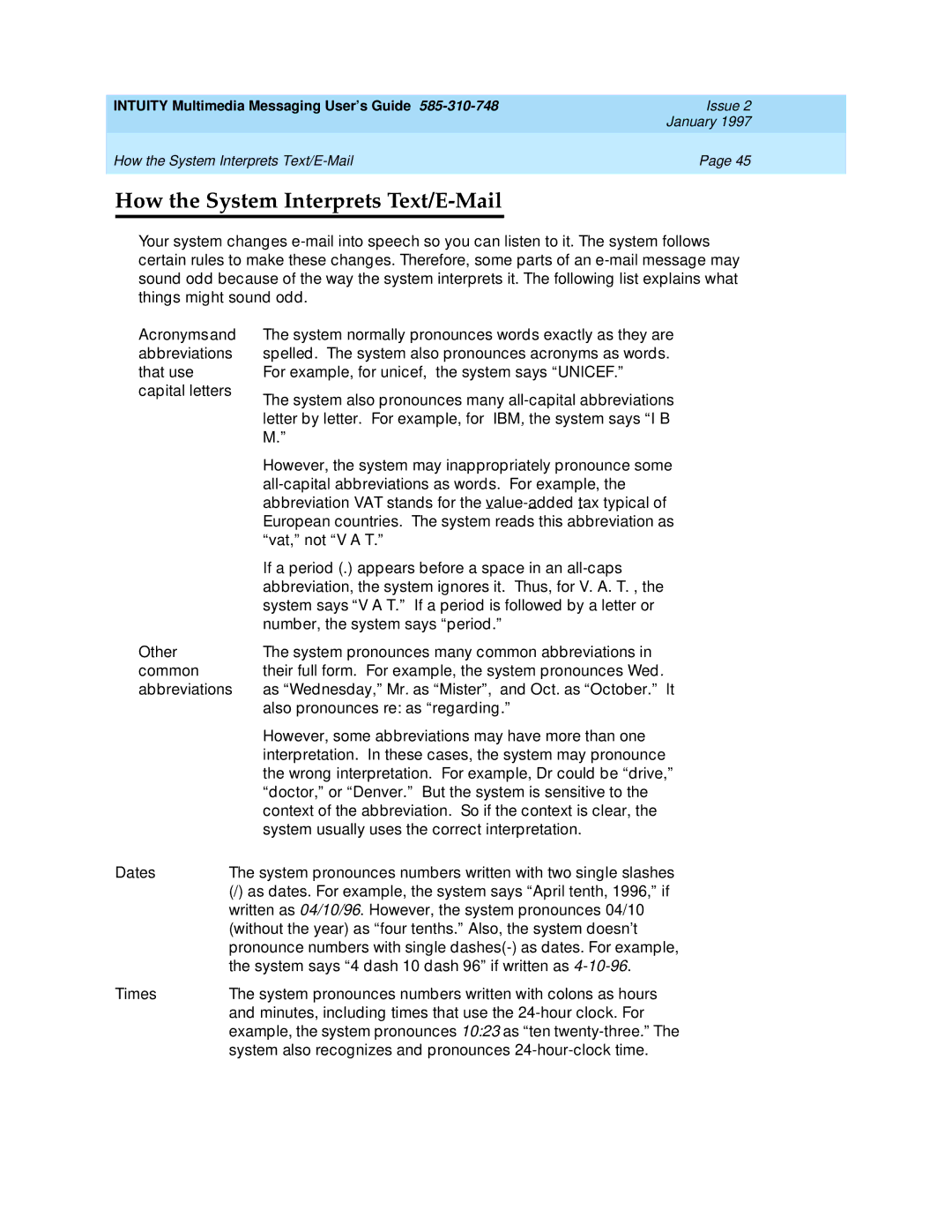INTUITY Multimedia Messaging User’s Guide | Issue 2 |
| January 1997 |
How the System Interprets | Page 45 |
|
|
How the System Interprets Text/E-Mail
Your system changes
Acronymsand | The system normally pronounces words exactly as they are | |
abbreviations | spelled. The system also pronounces acronyms as words. | |
that use |
| For example, for unicef, the system says “UNICEF.” |
capital letters | The system also pronounces many | |
|
| |
|
| letter by letter. For example, for IBM, the system says “I B |
|
| M.” |
|
| However, the system may inappropriately pronounce some |
|
| |
|
| abbreviation VAT stands for the |
|
| European countries. The system reads this abbreviation as |
|
| “vat,” not “V A T.” |
|
| If a period (.) appears before a space in an |
|
| abbreviation, the system ignores it. Thus, for V. A. T. , the |
|
| system says “V A T.” If a period is followed by a letter or |
|
| number, the system says “period.” |
Other |
| The system pronounces many common abbreviations in |
common |
| their full form. For example, the system pronounces Wed. |
abbreviations | as “Wednesday,” Mr . as “Mister”, and Oct. as “October.” It | |
|
| also pronounces re: as “regarding.” |
|
| However, some abbreviations may have more than one |
|
| interpretation. In these cases, the system may pronounce |
|
| the wrong interpretation. For example, Dr could be “drive,” |
|
| “doctor,” or “Denver.” But the system is sensitive to the |
|
| context of the abbreviation. So if the context is clear, the |
|
| system usually uses the correct interpretation. |
Dates | The system pronounces numbers written with two single slashes | |
| (/) as dates. For example, the system says “April tenth, 1996,” if | |
| written as 04/10/96. However, the system pronounces 04/10 | |
| (without the year) as “four tenths.” Also, the system doesn’t | |
| pronounce numbers with single | |
| the system says “4 dash 10 dash 96” if written as | |
Times | The system pronounces numbers written with colons as hours | |
| and minutes, including times that use the | |
| example, the system pronounces 10:23 as “ten | |
| system also recognizes and pronounces | |
